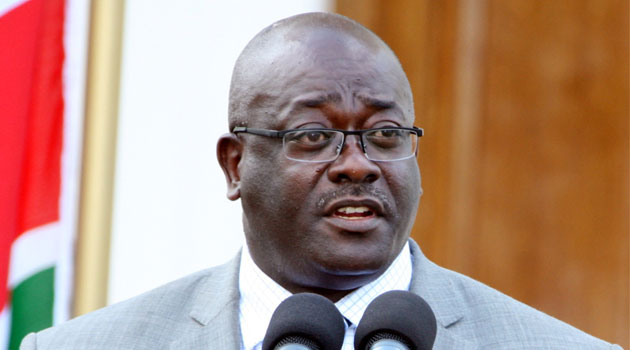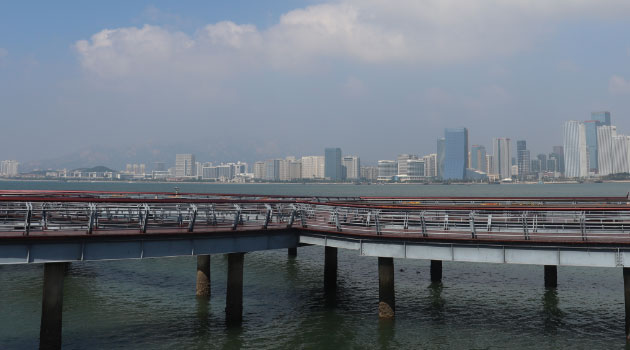NAIROBI, Kenya Oct 1 – For most Kenyans the mainland or at the coast, the mention of the term blue economy is more or less limited to exploring the deep water for fishing, ocean tourism as among some of the underutilized potential of our beautiful country bordering the Indian Ocean.
Blue economy is a sustainable marine economic development mindset and its essence is to develop marine economy while protecting marine ecosystem well and finally achieving sustainable utilization of resources.
I was among that very vibrantly silent majority who thought this attempt at breaking away with the old ways at the coast would mean stripping the Coastal residents of their source of livelihoods.
But when I recently got a nomination to travel to China as a part of a 21-member Kenyan team attending a seminar on news media, this notion changed when we got to rapid upcoming seaside port city on the east side of Shandong Province, by the name Qingdao.
The one that caught my attention was when our guest lecturer Li Yan Lun, spoke about this city which until 2016 was just a marshy parcel of land used to plant rice before the government decided to explore it as a blue economy and sea tourist pilot city.
Here is the hook that really got me interested; Qingdao last year reported a GDP of 1.2 trillion Yuan. At first ‘I was like it is not a big deal, our national budget for 2019/2020 is Sh3.3 trillion.’ It’s not until I realized the difference in currency that it hit me, I was comparing a three-year-old city to a 54-year-old sovereign state.
But, it got better when the lecturer began to tell us how they transformed their sleepy city to be a city that during the 2008 Olympics held in Beijing – it hosted the sailing Olympics and in June 2018 it boasts of having hosted the largest, highest-level, and most fruitful summit of the Shanghai Cooperation Organisation (SCO).

Chinese leader Xi Jinping with other world leaders after a summit held in Qingdao city in 2018. /COURTESY.
For me, the road to the reform and opening up of Qingdao has several similarities with the most of the counties in the Jumuiya la Kaunti za Pwani they all want to in their own way to transform into a modern international metropolis with massive investments in road infrastructure and expansion of the Berth 1 at the Lamu Port, as well as the completion of the Standard Gauge Railway (SGR). Since the onset of devolution in 2013, they look set to be on a good foundation.
But of late, there have been dissenting voices which have began to send fears that this very opportunity will not benefit the people of coastal counties.
This is a challenge that the Qingdao faced in 1981, when it was listed as one of the 15 economic centers in the country and later in 1984, when it became one of the first 14 coastal port cities in the country to be further opened to the outside world.
Li explains that the Communist Party of China (CPC) Provincial Congress in Shandong developed a blueprint which was then disseminated through the People’s Congress which marketed the project as an eye-opener even as the government embarked on a propaganda campaign (in China, this word is used in the place of public relations/public communication campaign, in fact it is not surprising to hear someone proudly introduce himself as a Propaganda Officer of an institution.)
The campaign to demystify the blue economy agenda and to convince residents to embrace the new developments which would disrupt life as they knew it but at the same time open up the region to new investments and expose its produce to new markets.
This gamble paid off because among the significant improvement in people’s lives include the per capita disposable income of urban residents which increased by 150 times from 336 Yuan (Sh5,040) in 1978 to 50,817 Yuan (Sh762,255) in 2018.
Li explained that Qingdao has already deployed a team of officials to the neighbouring city of Shenzhen, where they have been learning best practices and come back home to domesticate it with a view of catching up with Shenzhen and ultimately over taking it.
“Furthering the development of innovation required learning from advanced countries and connecting with advanced technologies in the world,” he explained.
Qingdao’s administration is ambitious in that it is aiming at building an open, modern, dynamic and fashionable international metropolis, creating a new important strategic pivot for the countries in the north of the Yangtze River for opening up in depth.
“The city will play a leading role in Shandong’s economic development and strive to become a national central city and an international coastal city,” Li added.
The port counties of Mombasa and Lamu could do well to borrow from Qingdao, which in December 2018 achieved the highest record of average operating efficiency per machine recorded by automated wharves worldwide.
Currently, the officials of the port city are aiming at adopting an innovation-driven development as their top goal. They also prioritized promoting high-quality development as well as accelerating the creation of a modern economy and emphasizing and strengthening Qingdao’s soft power so it can evolve as a fashionable and beautiful city.
My parting shot is this; as we departed from Qingdao International Airport; could it be that the reason why some of us are opposed to some of these major projects is because we are not clear on the end product, maybe General Samson Mwathethe and President Uhuru Kenyatta have seen the ‘promised land’ but I think they need to spend a little more time painting the picture in the minds of the people so that they know blue economy is not coming to kill their way of life but to add value to their way of life.
It is the future anyway.











































